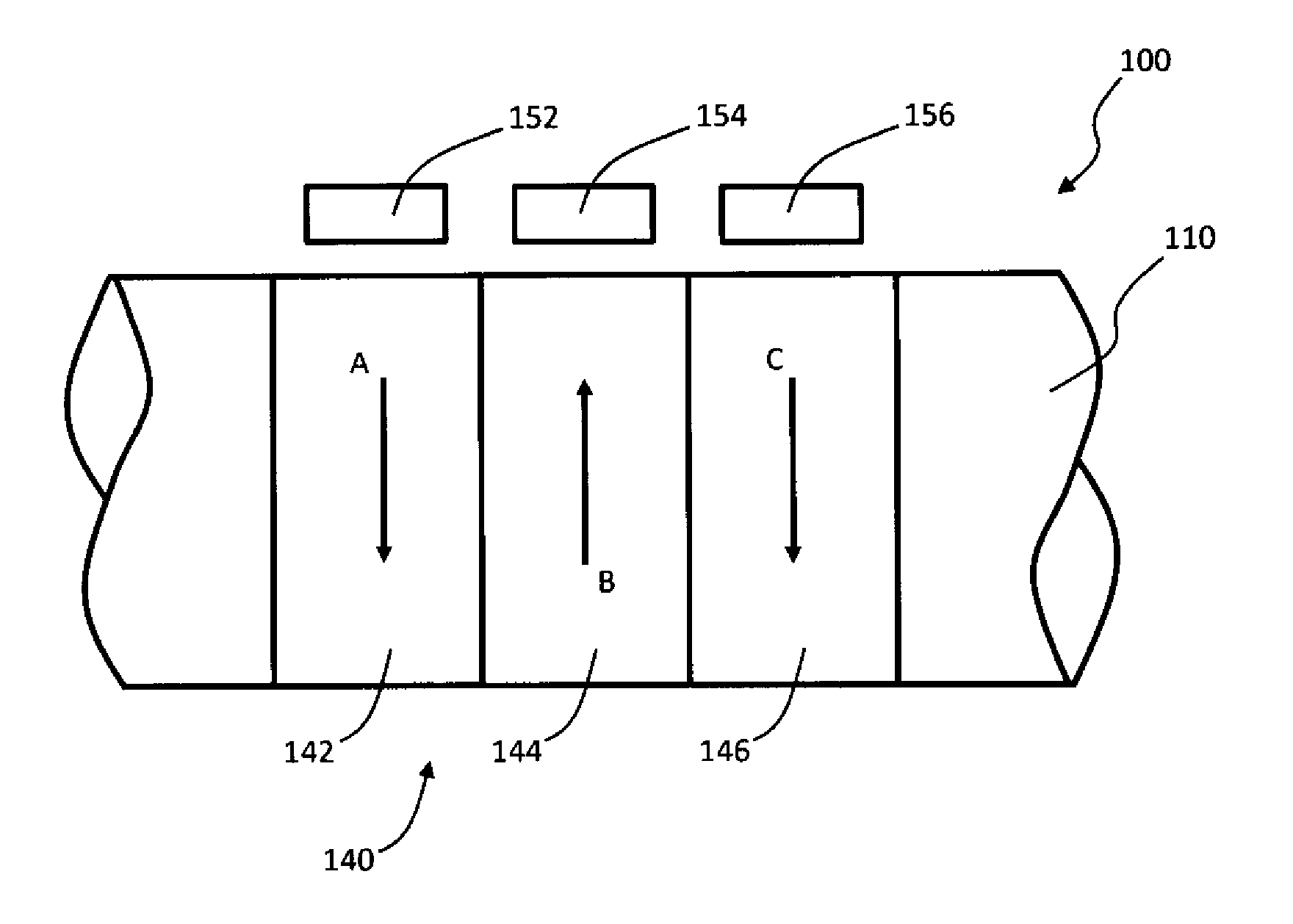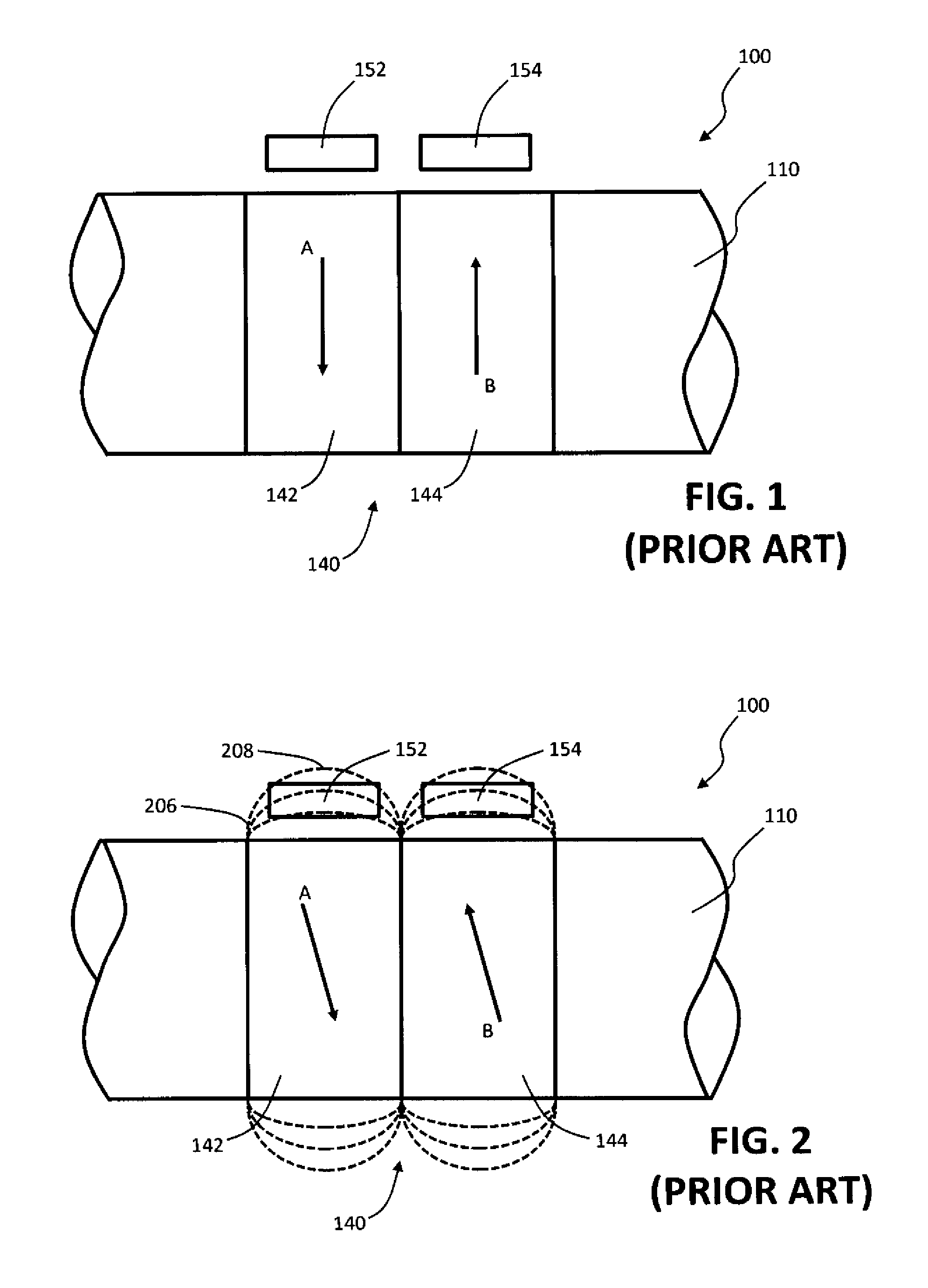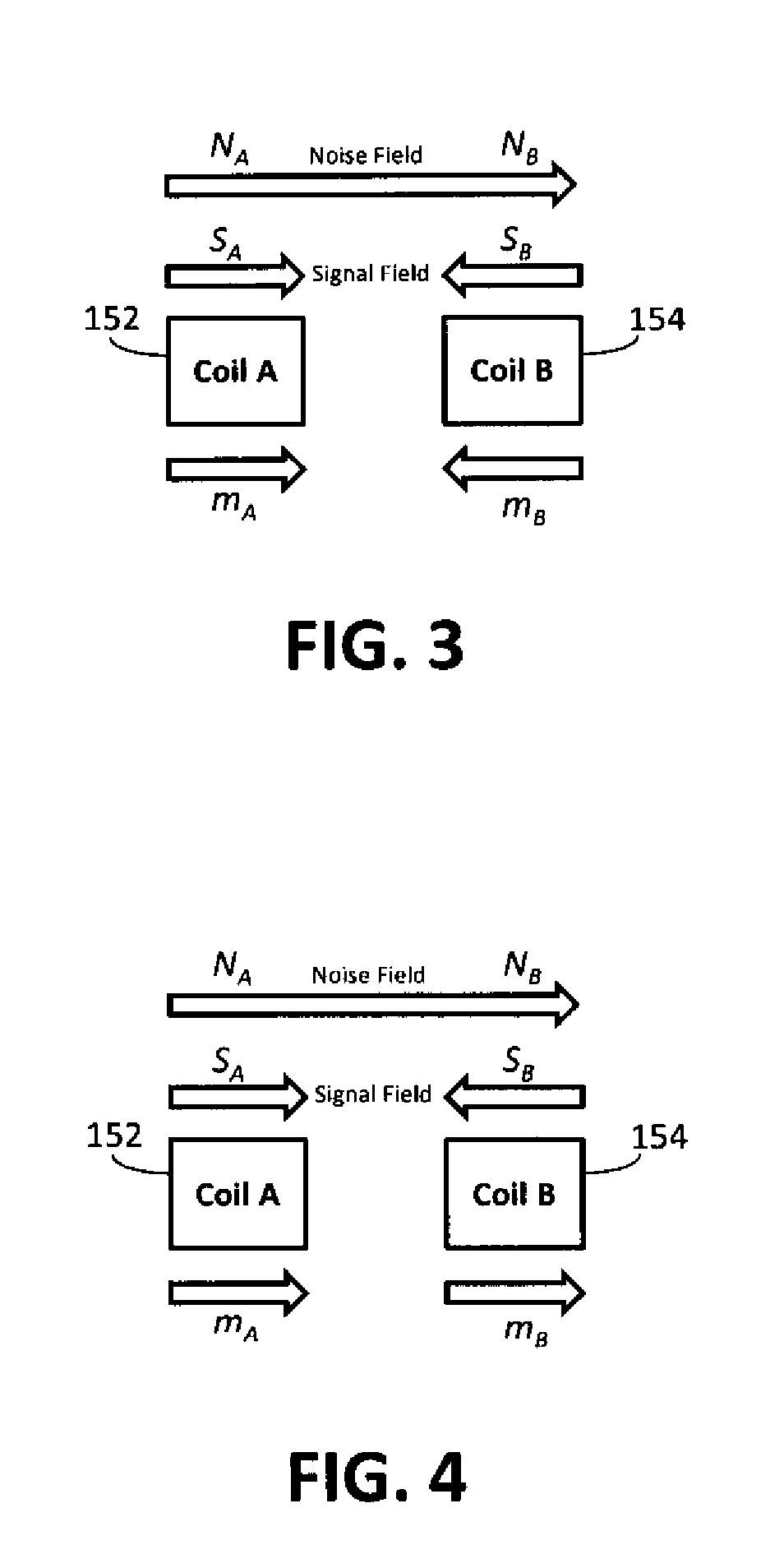System and method for detecting magnetic noise by applying a switching function to magnetic field sensing coils
a switching function and magnetic field technology, applied in the field of magnetic field sensors, can solve the problems of high cost, limited reliability, high cost, etc., and achieve the effect of accurate torque measuremen
- Summary
- Abstract
- Description
- Claims
- Application Information
AI Technical Summary
Benefits of technology
Problems solved by technology
Method used
Image
Examples
Embodiment Construction
[0041]Several preferred embodiments of the invention are described for illustrative purposes, it being understood that the invention may be embodied in other forms not specifically shown in the drawings. The figures will be described with respect to the system structure and methods for using the system to achieve one or more of the objects of the invention.
[0042]Turning first to FIG. 1, shown therein is a side view of a cylindrical shaft110 in accordance with a “dual-band” embodiment of the torque sensing device 100 of the present invention. The shaft 110 may be rotatable about its central longitudinal axis, or may be static. A torque applied at one portion of the shaft 110 is transmitted thereby to another portion of the shaft 110 wherein the application of the torque results in the performance of some useful work. The motion of the shaft 110, or the applied torque 110 may be in a clockwise or counterclockwise direction when looking upon an end of the shaft 110, and may be in eithe...
PUM
| Property | Measurement | Unit |
|---|---|---|
| coercivity | aaaaa | aaaaa |
| coercivity | aaaaa | aaaaa |
| magnetoelastic torque | aaaaa | aaaaa |
Abstract
Description
Claims
Application Information
 Login to View More
Login to View More - R&D
- Intellectual Property
- Life Sciences
- Materials
- Tech Scout
- Unparalleled Data Quality
- Higher Quality Content
- 60% Fewer Hallucinations
Browse by: Latest US Patents, China's latest patents, Technical Efficacy Thesaurus, Application Domain, Technology Topic, Popular Technical Reports.
© 2025 PatSnap. All rights reserved.Legal|Privacy policy|Modern Slavery Act Transparency Statement|Sitemap|About US| Contact US: help@patsnap.com



